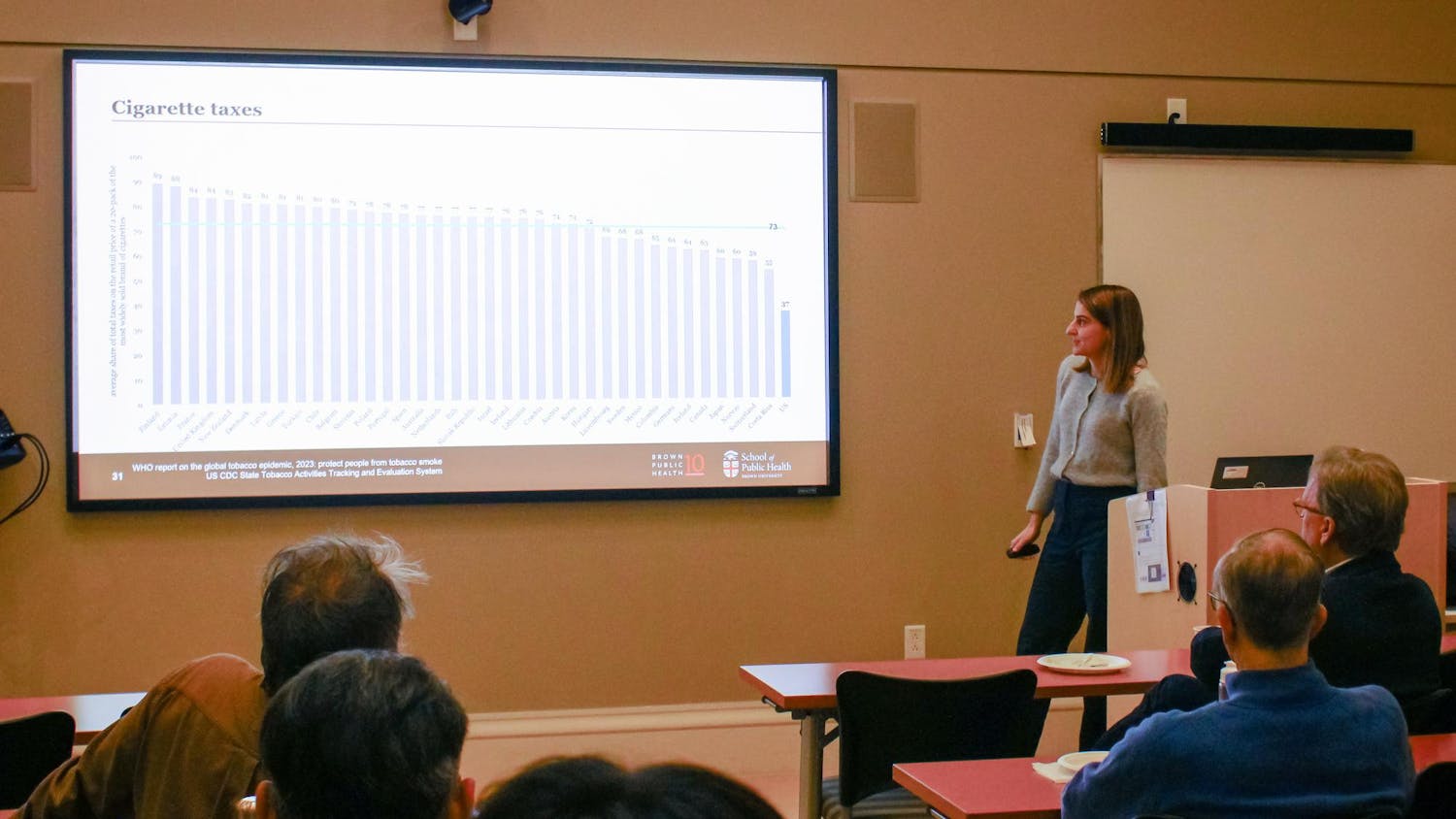Driving down Route 195 to Providence, you’re sure to notice banners and billboards advertising marijuana and places to find it. This ubiquity is rare for a drug considered by the U.S. Drug Enforcement Administration to have “no currently accepted medical use and a high potential for abuse.”
On Aug. 29, 2023, the U.S. Department of Health and Human Services published a recommendation for the DEA to reclassify marijuana from a Schedule I to a Schedule III drug. In exploring the social implications of this proposed change, The Herald interviewed scientists from Brown on their research and what it may look like in years to come.
Though cannabis contains over 500 known chemical compounds, two psychoactive chemicals are especially well-researched: cannabidiol, or CBD, and tetrahydrocannabinol, or THC, which gives marijuana its euphorigenic qualities.
In 2018, the Farm Bill’s definition of “hemp” paved the way for legalizing medical marijuana and adult use across the United States. According to an article in the New England Journal of Medicine, only three states have no legalized form of marijuana today.
Cannabis is widely used, with 44% of young adults aged 19 to 30 reporting using the drug recently. April 20 on College Hill is “sort of like a Super Bowl for stoners,” The Herald previously reported.
Daily marijuana use also reached an all-time high in 2022 among Americans, according to a 2023 report by the National Institute on Drug Abuse.
But cannabis remains classified as a Schedule I drug under the Controlled Substances Act, rendering it and all derived products illegal at the federal level. This classification is shared by highly abused substances including heroin, LSD and MDMA.
Schedule III drugs are defined as “drugs with a moderate to low potential for physical and psychological dependence,” such as anabolic steroids and testosterone, according to the U.S. Drug Enforcement Administration.
The Food and Drug Administration’s support of the proposed change hinges on marijuana’s acceptable medical use.
Lauren Micalizzi, an assistant professor of behavioral and social sciences at Brown’s Center for Alcohol and Addiction Studies, explores the effects of prenatal cannabis exposure on expecting mothers and their fetuses. In a series of emails to The Herald, Micalizzi expressed cautious optimism about reduced administrative research barriers that the proposed change might entail, citing fewer obstacles in studying Schedule III drugs as opposed to Schedule I.
Since the use of cannabis while pregnant can lead to legal ramifications for users, “pregnant people may be less likely to seek prenatal care or to disclose their substance use to healthcare providers due to fear of judgment or legal repercussions,” wrote Micalizzi, adding that they “may also experience stigma and judgment from family members, friends and healthcare providers.”
This has led to a lack of scientific evidence for marijuana’s use during pregnancy due to decreased “health-seeking behaviors,” according to Micalizzi. “Fear of negative consequences associated with the disclosure of cannabis use, such as the experience of stigma and mandated reporting, are barriers to conducting this research in pregnant populations.”
“Moving to a Schedule III … has the strong potential to reduce stigma associated with the use of cannabis, which is good,” Micalizzi wrote.
But Micalizzi emphasized that even though the proposed category change can increase pregnant people’s confidence in discussing their use of cannabis with their physicians, providers are required to make reports to Rhode Island’s Department of Children, Youth and Families if they’re involved in the care of infants affected by drug exposure.
“Punitive policies can reduce health-seeking behaviors, negatively impact the health of the birthing person and child and result in a widening of racial and ethnic disparities in DCYF reporting,” she added.
Rachel Gunn, an assistant professor in the Department of Behavioral and Social Sciences, also pointed to the potentially positive research implications if marijuana is rescheduled.
“The cannabis retail market is taking off, and we need to be able to study the variety of modalities and products individuals are currently using with less restriction,” she wrote in a series of emails to The Herald.
Gunn began to examine cannabis use when studying alcohol use among college students, observing “the prevalence and impact of other substance use among those who drank heavily.”
Gunn has observed mixed evidence on the effects of combining alcohol and marijuana. “In treatment populations, there has been a recent increase in patient populations reporting that cannabis is an effective ‘substitute’ for drinking,” she wrote, adding that she is interested in continuing to study these effects under potential drug rescheduling.
Like effects of combining alcohol and marijuana, many cannabis-related questions have nuanced answers and require further research, according to Gunn. For example, conditions like psychosis also have an association with marijuana, she wrote.
While “cannabis use is associated with worsening depression over time,” Gunn wrote, “patients are increasingly reporting cannabis (as) helpful for several mental health symptoms, including depression and anxiety, especially in the morning.” Despite some extreme cases illustrating stark dangers, more research is needed to better understand the apparent two-sided effects of marijuana, she added.
According to Gunn, expanded research is among the “clear benefits” of moving marijuana to schedule III.
But the history of the drug’s classification is complex, said Zoe Brown, project coordinator in the Micalizzi Lab in the Center for Alcohol and Addiction Studies.
In an email to The Herald, Brown noted that the scheduling of cannabis has long been debated. After cannabis was classified Schedule I under the Nixon administration, “commissions argued for reclassification and decriminalization” as early as 1972. “But the presidential administration refuted these claims,” she wrote.
According to Brown, the law surrounding marijuana’s classification could affect social determinants of health, including race and economic status. “Historically, the criminalization of cannabis use has disproportionately affected minority communities — an outcome that continues to this day even as policies have changed,” she wrote.
Micalizzi agrees that rescheduling would not eliminate all challenges of studying marijuana in marginalized populations, and expressed her concerns with existing policies for mandated reporting. “Rescheduling cannabis can reduce barriers to scientific research, but the legal complexities to studying cannabis in pregnancy would likely remain,” she wrote.
When asked if rescheduling may lead to more people using marijuana, Brown was pragmatic. “Already, cannabis is the most widely used federally illegal substance in the U.S.,” she wrote. “I personally do not foresee a reduction in this trend anytime soon.”
“This is why it is so incredibly important to research cannabis,” she added. “Especially as legalization continues across the U.S., so that public health and policy officials can make the most informed decisions and provide guidance to the public.”

Ranjana “Jaanu” Ramesh is a Bruno Brief-er, photographer and Senior Staff Writer covering science & research. She loves service, empathetic medicine and working with kids. When not writing or studying comp neuro, Jaanu is outside, reading, skiing, or observing Providence wildlife (ie: squirrels).





